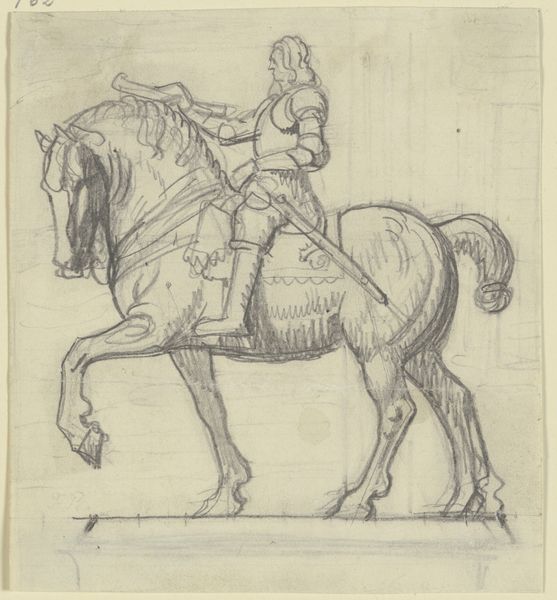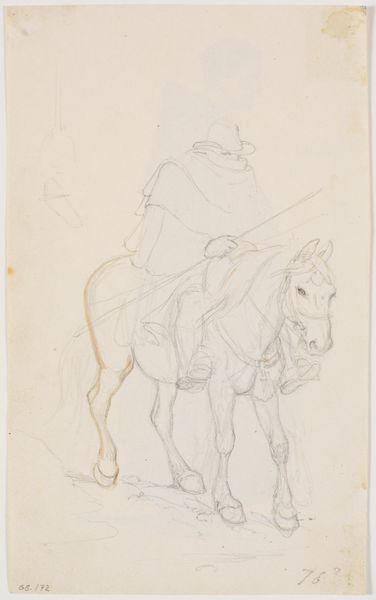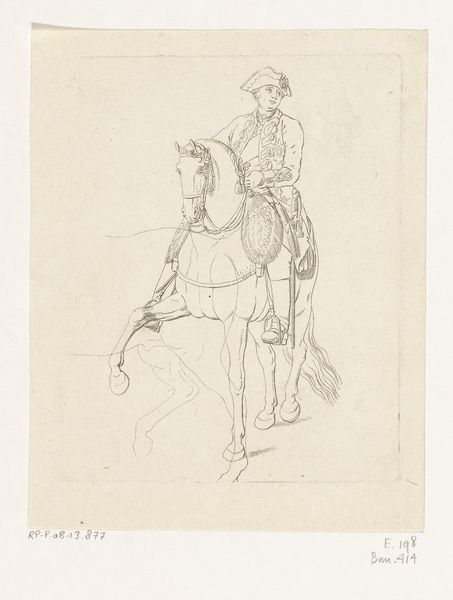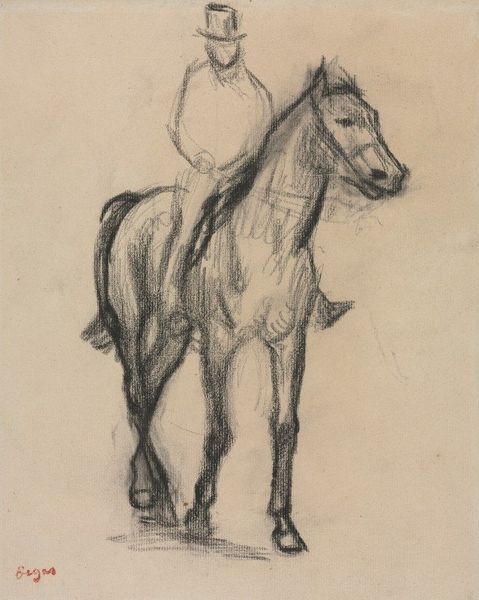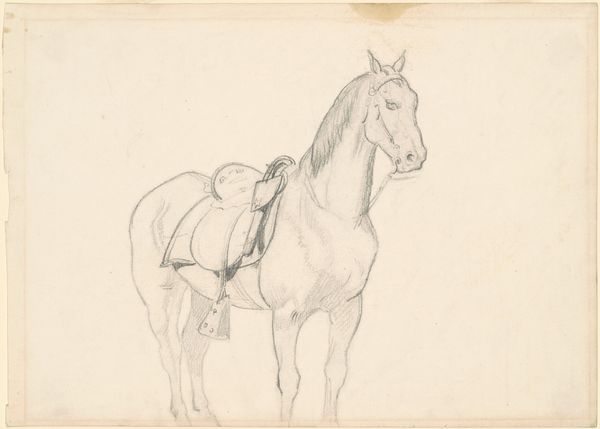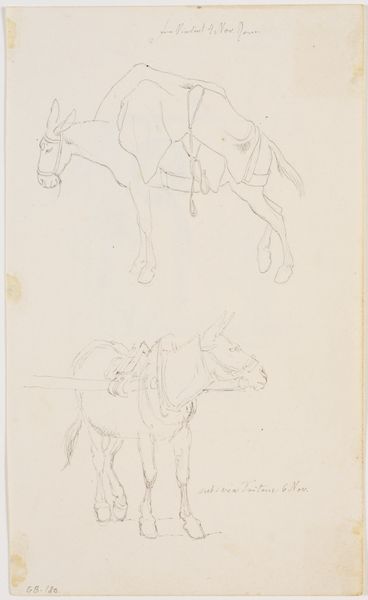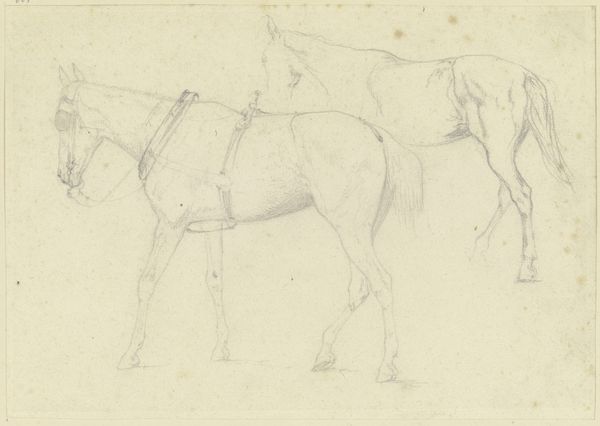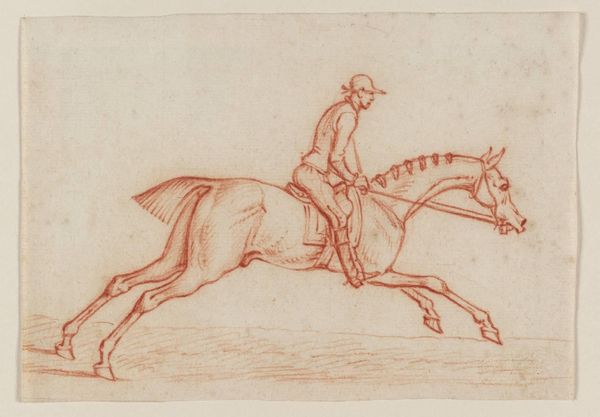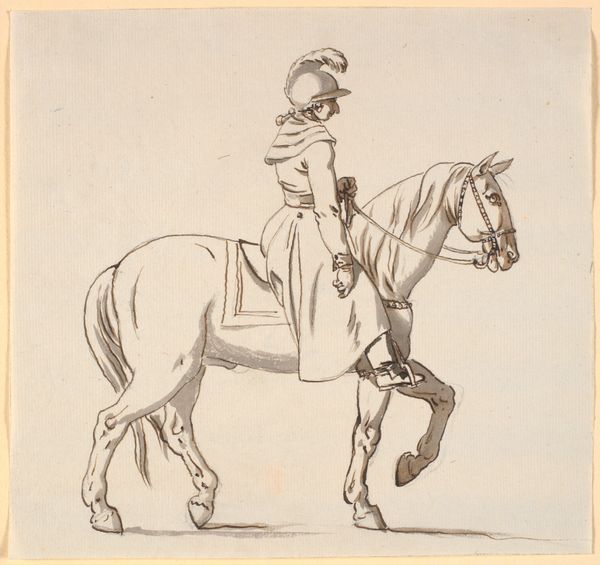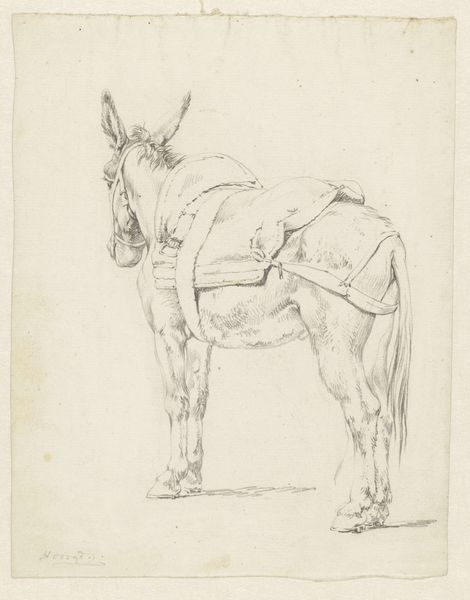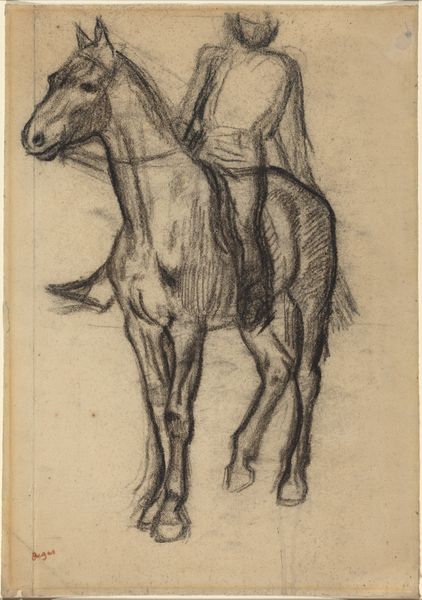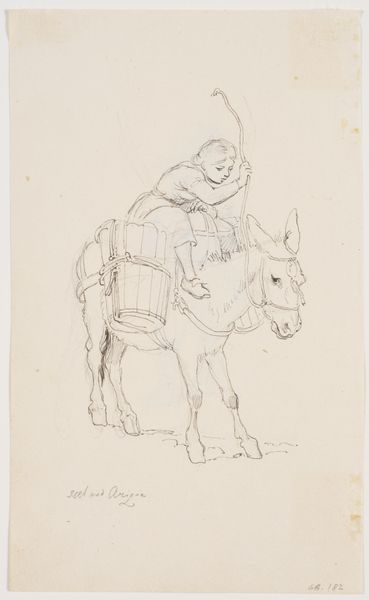
drawing, paper, pencil, chalk
#
portrait
#
drawing
#
figuration
#
paper
#
pencil
#
chalk
#
history-painting
#
academic-art
Copyright: Public Domain
Curator: A study in monochrome! This pencil and chalk drawing, titled "Monument of Charlemagne," was crafted around 1905 by Fritz Boehle, and it's currently held here at the Städel Museum. Editor: Immediately, there's this imposing sense of weight—not just in the monument itself, but even in Boehle’s quick strokes capturing its mass. A stoic king and sturdy horse! It conveys an air of almost melancholic grandeur, don’t you think? Curator: It's fascinating how the artist utilizes the contrast of chalk and pencil. The horse looks powerful, indeed. And observe the intricate detailing, despite it just being a sketch! This drawing provides a window into Boehle's approach to academic art and history painting. Editor: The horse feels almost too solid for its rider – it nearly steals the show, I see the lines of power concentrated there, whereas Charlemagne has a more gestural feel, as a wisp, somehow. This placement diminishes his intended dominance and introduces unexpected interpretations. Curator: Perhaps Boehle was grappling with the complexities of leadership and the weight of legacy! The monument as a subject seems interesting because the horse in itself can symbolize authority, power, even conquests, which links to the king’s powerful image, or, to the artist’s views on kingship and its representation at the time. Editor: I'm captivated by the texture, a wonderful dialogue between precision and freedom! You sense the artist experimenting, a fluidity and grace of the moment, where each stroke reveals a searching for essence more than just portraying solid monumentality. There’s something deeply evocative and humanizing! Curator: A glimpse into history retold, maybe. This artwork feels special, where traditional academic meets free artistic rendering of something! Editor: Exactly! And perhaps, it reminds us that monuments are more than cold stone; they are a dialogue between power, representation, and perception that continues.
Comments
No comments
Be the first to comment and join the conversation on the ultimate creative platform.
